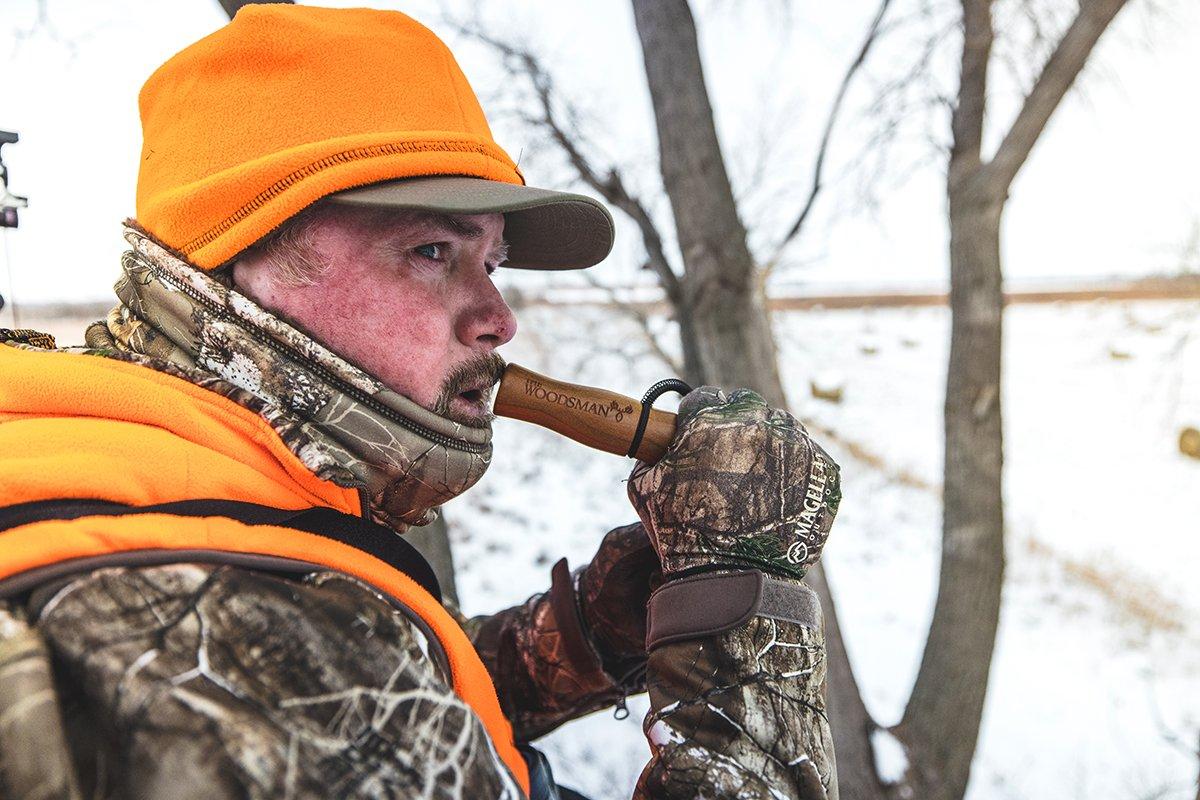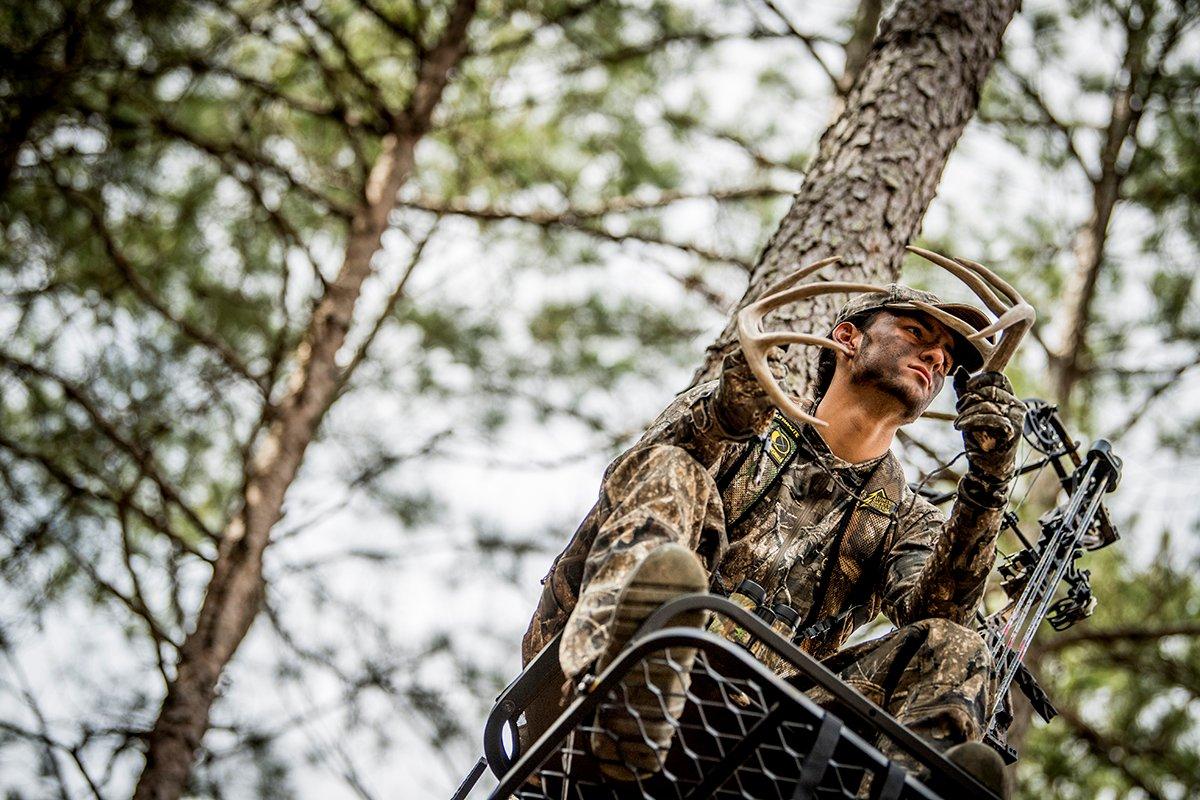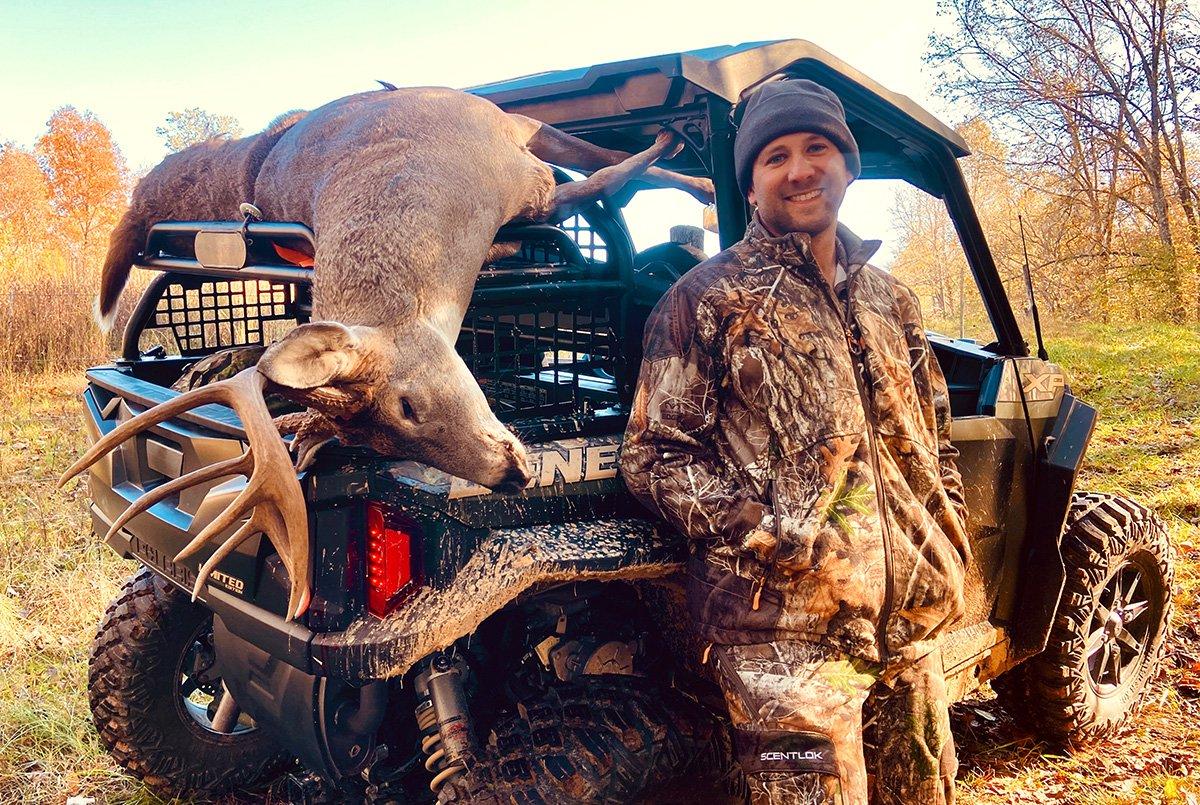Never called up a buck? You may not be doing it right. Here's how to grunt, rattle, and snort-wheeze your way to punched-tag glory this fall
Jeff Danker remembers well the first time he ever called up a buck. It was back in the '90s, when hunting videos were becoming a thing, and the heroes on screen seemed to call up bucks with every click of the rattling antlers. Danker wanted to see a buck come charging in to his calls, too, but it never seemed to happen.
I almost thought those guys on TV were lying, he says.
But there were key differences between what the TV guys were doing and Danker's approach - and if you're not calling in deer yourself, you're probably making some of the same mistakes, so pay attention.
I'd have just watched a guy on a hunting video rattle up a buck at daylight, Danker says. But then I'd go hunting, hang my calls next to me in the stand, and hunt in silence till 10 or so. I'd be about ready to climb down and think, 'Well, I'll try calling first.'
Over and again, that strategy failed, and Danker's enthusiasm for deer calling waned. But it all changed when he started hunting the prairie country of northwest Oklahoma. Out there, I could call to a deer that I could see and watch his reaction. Things changed. The first buck that came to me ran in so fast that I almost couldn't get my bow in time.
Danker is one of those hunters on TV himself these days, and he's a longtime member of the Realtree pro staff. He's also a big-buck killer, and you won't find many who lean as heavily on deer calling. He loves hunting open country, but Danker leans on likes to use deer calls wherever he's hunting, including the Midwest.
Danker says that people overthink deer calling, same as they do other types of game calling. People think that to call an elk, you have to make the perfect bugle. Or they get worried about how to blow a grunt call or make a snort-wheeze just right, he says. Sounding realistic is good, but it's not about the sound. It's about reading the buck, and all the other things that happen before you call at him.
And to close the deal with a filled tag, you have to do some things right after making the sounds.
(Don't Miss: Why Deer Hunting on Halloween is Scary Good)
Timing Is Everything
Last year, an hour after first light on Nov. 2, I was in a lock-on stand that was flanked on one side by a Tennessee hayfield, and on the other by a gnarly creek bottom. Big crop fields surround that particular farm, and the creek bottom is a perfect place to catch a cruising buck. A buck was the first deer I saw that morning, marching through the timber 100 yards ahead. I didn't see a rack but I did see dark-stained tarsal glands, and so I hit him with a loud, long grunt followed by a few shorter, tending-type notes.
That done, I popped the lid of the camo coffee bottle in my hand and took a hot sip. I had a moment of thinking, You idiot, put the coffee down for a minute; you just grunted at a cruising buck. Just as I dropped the bottle into my pack, a buck with a wide, chocolate rack marched out of the cover 40 yards ahead of me and walked straight at me, licking his nose, ears pinned. I picked up my bow, hit full draw, and made a soft bleat to stop him. No more than a minute passed from the time I saw him at 40 yards to the time I watched him fall dead.
The grunt call worked so well, the coffee was still plenty hot.
All those bucks on Nov. 1, they know where the does are. They're out looking and scent-checking, and they're frustrated, Danker says. Right at daylight, they're leaving all those rubs you see on the field edges. When they're up and moving like that, that's when you need to be calling. In my experience, calling works way better at first light than any other time of day.
Point taken. But Danker says there are other considerations. You can't call in a big deer that's already onto you. If you're not doing it right, it won't work, he says. You have to hunt a good wind, and you have to have good entry routes. If you're making noise or putting deer on alert before you ever get to the tree, you're probably not calling up a buck.
In broken Eastern country, topography and vegetation can help steer a deer into range. But in big crop fields or open country, Danker likes to use a decoy. When they pinpoint the sound, they're like a gobbler coming in, he says. They're not looking within 30 yards of the sound — they're looking within 3 feet. Right at your tree. In open country, you better have a decoy, or he's going to see right through it.
(Buy Alert: Realtree Camo Pro Staff Performance Hoodie)
Call With a Purpose
Don't make deer calls without a plan. Let's say it's the best time of year — about Oct. 25 through Nov. 10, Danker says. I get in the stand, let it get light, and glass to make sure something's not already close. Then I'll do a blind-calling sequence. I try to a paint a picture of a scene. I start out with tending grunts — a buck chasing a doe — and then another imaginary buck comes in. So I snort-wheeze. Then I follow it up by rattling. I stay ready, because I'm expecting a response.
What if he sees a buck first? If he's walking toward you, let him come — but if he's paralleling or going away, absolutely call at him, Danker says, and it doesn't matter the time of year. From the moment they strip their velvet, bucks are ready to breed. I've had them come to calls in September.
But it's a more delicate situation when you're calling to a buck you can see. Danker makes contact with grunts, and he watches for indication that the deer hears it. When he stops, lifts his head, and swishes his tail, don't move. Wait until he's not looking before calling again. Softly grind antlers or a rattle bag. Snort-wheeze if he doesn't respond to that. If it's the right deer, he can't handle it.
Not every buck has a fighter's temperament, and they won't all respond. But Danker figures he has nothing to lose by trying calls. Guys see a big buck walk by out of range, and they think, 'Well, I'll get him tomorrow.' But you don't see big bucks every day, and he's there, right now. Me? I'm going to try and call him in for a shot while I have the chance.
(Don't Miss: 3 Top States for DIY Big Buck Hunters)
Rules to Follow
If you've done everything right, you might find that a buck turns on a dime and heads to your tree, as soon as you call at him. That's crunch time, and it's easy to squander the opportunity. Even the baddest guy out there is still nervous walking into a fight, Danker says. It's instinctive; that buck is risking his life. And so they're watching and looking the whole way. It's easy to get busted by moving at the wrong time.
Sit stone still. Time any movements you make for when the buck steps behind cover. If possible, use the trunk of the tree you're in to conceal you. And don't get antsy. So many guys mess up when they have a deer coming to them; they've got their bow, they're about to get a shot, and then the buck hangs up behind cover, Danker says. And they grunt again. All of the sudden, that sound is super loud and close, and it's unnatural. Don't panic when he stops, and don't take a bad shot. Be patient. If you've got the wind and he's oblivious, he's probably going to keep working to figure out where the other buck is and give you a shot.
Another of Danker's rules? Don't call at bucks you don't plan to shoot. Stop grunting at forkers because you're bored, he says. They'll come in and stomp around your stand, get your scent, and eventually figure it out. I'm convinced that gets engrained into them, and they remember it. It makes them much tougher to call in when they're mature.
(Buy Alert: Realtree Edge Camo Neoprene Hunting Boot)
Top Tools
Grunt Tube - Think of it like a turkey hunter's yelp. Live deer are pretty vocal animals, particularly during the rut. If season's in, don't leave home without it. Danker carries a Woodhaven Intimidator, which he helped design, because he can get high volume for open country. Back East, you might not need that much. Find a grunter you like, carry it, and use it.
Rattling Horns - Yes, I know they're antlers and not horns. But hitting the horns rolls off the tongue much better. Nothing sounds better than real bone, but rattle bags work just fine, too, and are way easier to carry. Do more grinding than crashing, and you'll call up more bucks.
Bleat - I remember the first buck I ever called into bow range. I was 18 and had just bought a Primos Can call. That 8-pointer was marching down a scrape line on a white oak ridge, just before dark, when I hit the call. He stopped what he was doing and walked right to me. I shot him at 15 yards, and I still have that rack, all 100 inches of it. I still carry a bleat call, too.
Snort-Wheeze - This is a sound of last resort because it will intimidate many bucks. But a bully will wheel right into it. Plenty of deer calls have snort-wheeze capability, but Danker prefers to make it with his voice, and so do I. Make it loud, and don't be embarrassed. The only one to hear it will be that buck — and with any luck, he won't live to tell about it.
(Don't Miss: 15 Places Big Bucks Bed That Deer Hunters Should Hunt)











